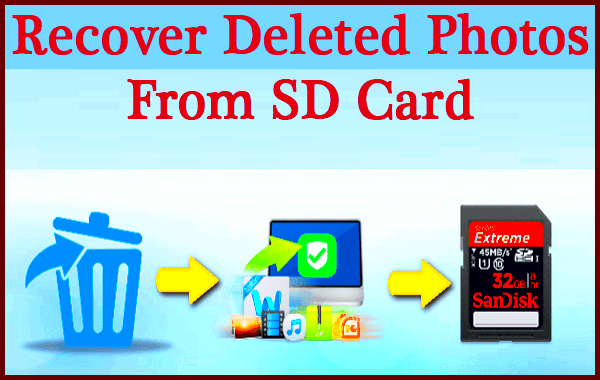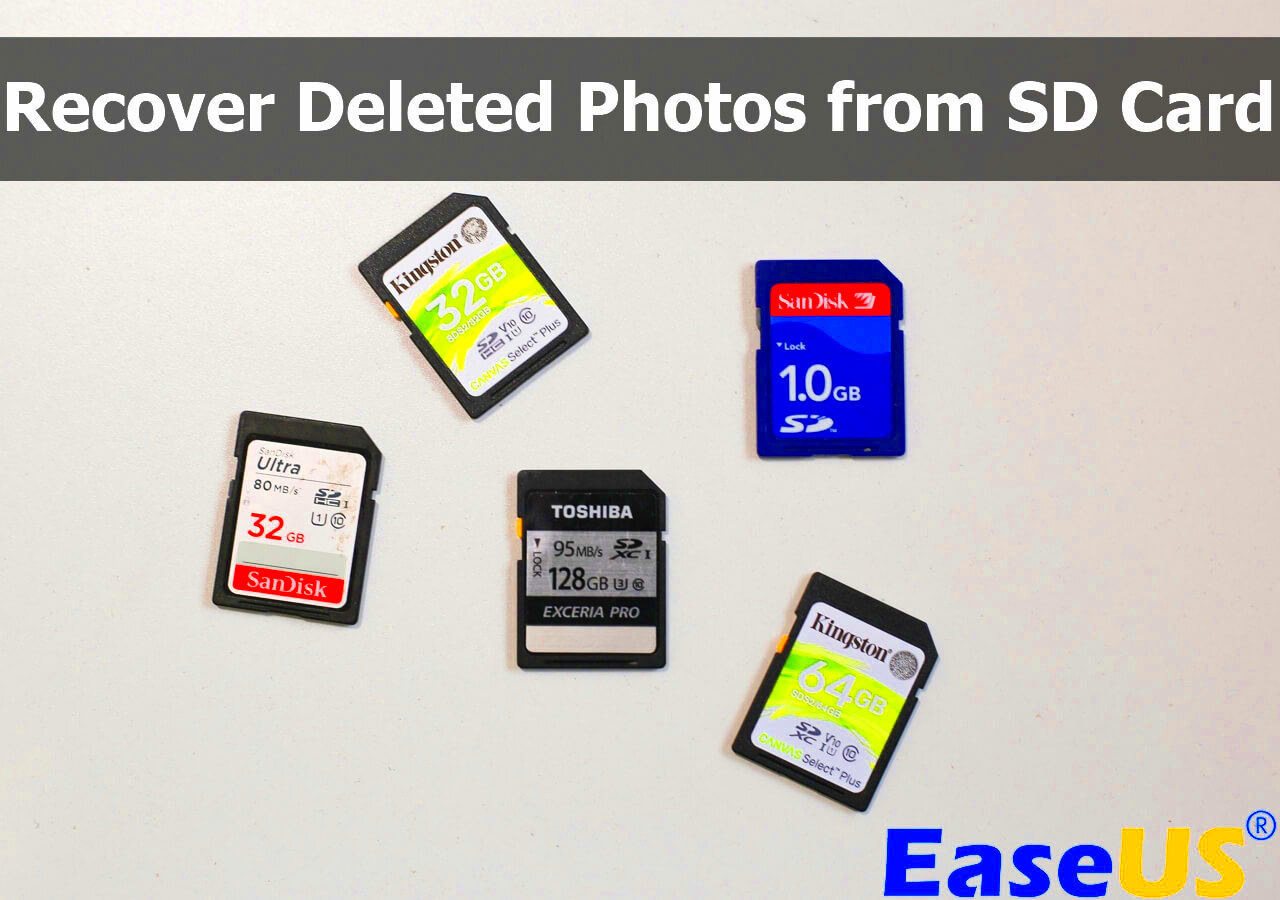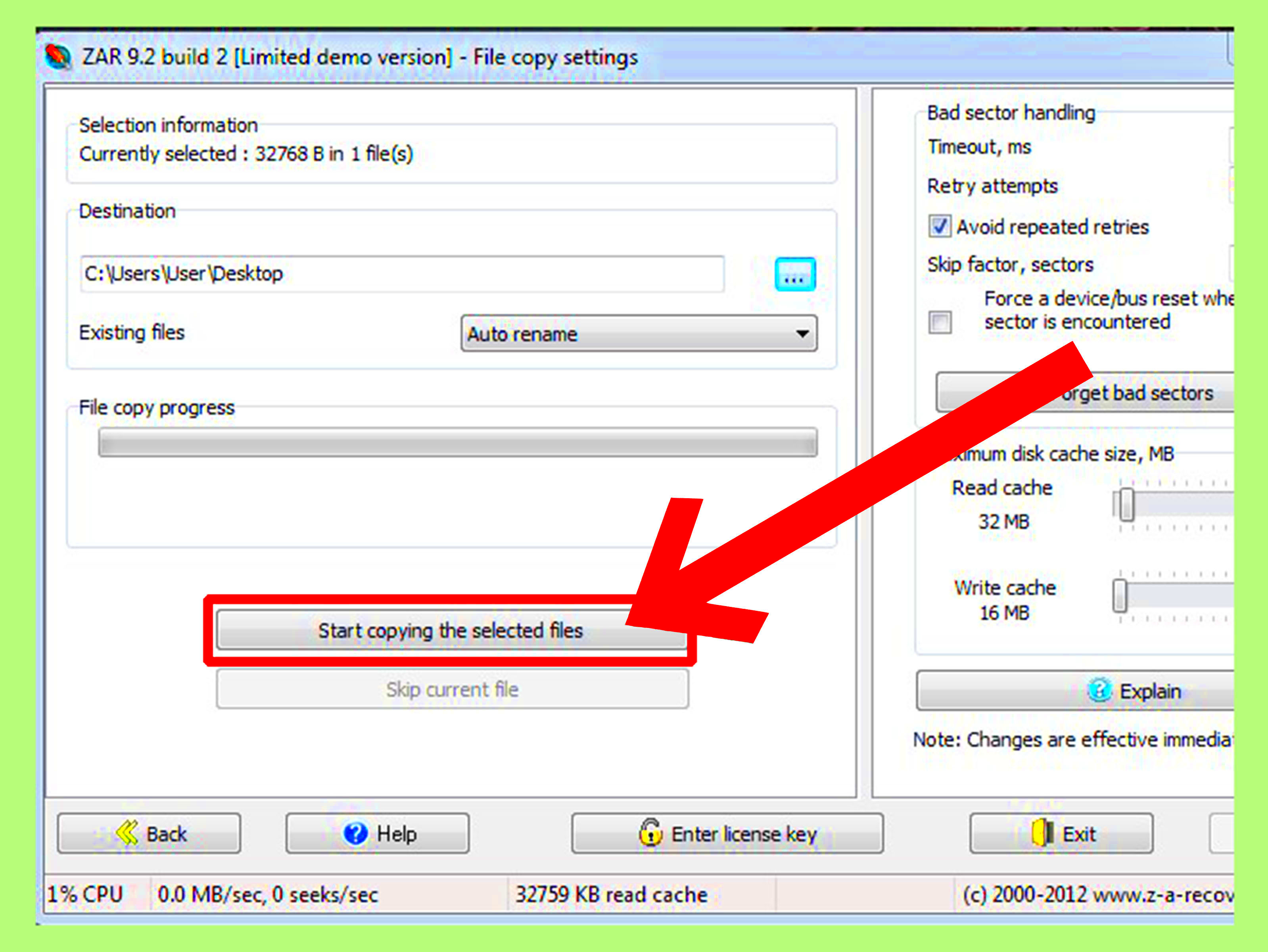SD cards are commonly used in cameras, phones, and other devices to store photos and videos. However, there are times when you may accidentally delete important images, or your SD card may become corrupted, leading to lost files. The good news is that in many cases, it's possible to retrieve deleted images from an SD card. In this article, we'll explore how to recover lost photos, what causes image deletion, and the best tools and methods for restoring your precious memories.
Common Causes of SD Card Image Deletion

There are several reasons why images may be deleted from an SD card, some of which are preventable. Here are the most common causes:
- Accidental Deletion: It's easy to accidentally delete photos, especially when managing your files on a device. One wrong tap or click, and your images are gone.
- Formatting the SD Card: When you format an SD card, it wipes all data on it. This often happens when you're trying to use the card in a different device or when the card is acting strangely.
- Card Corruption: If the SD card gets damaged or corrupted due to improper removal or a power failure, you may lose access to the files stored on it.
- File System Errors: A corrupted file system can prevent the device from reading the SD card, leading to data loss.
- Virus or Malware: Malicious software can cause unexpected file deletions or damage to files on the SD card.
Also Read This: Ultimate Guide to Removing Adobe Stock Watermark in Illustrator
How Deleted Images Can Be Recovered from an SD Card

Even after images are deleted from an SD card, they may still be recoverable. When you delete a file, it's not actually erased from the card, but rather marked as free space that can be overwritten. As long as the space hasn't been used by new files, recovery is possible.
Here’s how you can recover deleted images:
- Stop Using the SD Card: Once you realize images have been deleted, stop using the SD card to prevent overwriting the lost files.
- Choose a Data Recovery Tool: There are several data recovery programs available that can scan your SD card for deleted files. Some popular options include:
- Recuva
- EaseUS Data Recovery Wizard
- Disk Drill
- Scan the SD Card: Use the chosen recovery tool to scan your SD card for deleted images. The software will search for files that are still present but marked as deleted.
- Preview and Recover: After the scan, you can preview the recovered images before saving them to another storage device. This ensures that the files you want to restore are intact.
Remember, recovery success depends on how much the SD card has been used since the deletion. The sooner you attempt recovery, the better your chances of getting back those precious photos.
Also Read This: Are Depositphotos Images Available for Free? A Look at Free Image Options
Best Tools for Retrieving Deleted Images from SD Cards

When it comes to recovering deleted images from an SD card, choosing the right tool is essential. There are several data recovery programs available, and each has its own set of features and advantages. Here's a look at some of the best tools for the job:
- Recuva: This is one of the most popular free data recovery tools available. It’s easy to use, supports a wide range of file types, and allows you to recover lost photos and videos from SD cards, hard drives, and other devices. The free version has a basic scan, while the professional version offers more advanced features.
- EaseUS Data Recovery Wizard: EaseUS is known for its user-friendly interface. It supports recovering deleted images, videos, documents, and more from SD cards and other storage media. This tool offers a free version with a limited recovery capacity, while the paid version provides unlimited recovery.
- Disk Drill: This tool is known for its high recovery success rate. It offers a free trial to scan and preview recoverable files, but you’ll need to purchase the full version to restore them. Disk Drill also supports deep scans for even the most difficult-to-recover data.
- Stellar Data Recovery: Stellar is another reliable data recovery tool that can retrieve lost photos from SD cards, cameras, and other devices. It supports a variety of file formats and offers a preview option before recovery, so you can be sure of what you're restoring.
Each of these tools offers unique features, so choosing the one that fits your needs and comfort level is important. Whether you go with a free tool or opt for a paid version, make sure the software supports the file formats you need to recover.
Also Read This: 123RF Affiliate Program: Earning Opportunities and Benefits for Promoting 123RF Images
Step-by-Step Guide for Recovering Deleted Images
Now that you know which tools to use, let's walk through the process of recovering your deleted images from an SD card. Follow these steps for a smoother recovery experience:
- Stop Using the SD Card: As soon as you realize images have been deleted, avoid using the SD card. Continuing to use it can overwrite the deleted files, making them unrecoverable.
- Install Recovery Software: Choose one of the tools mentioned earlier and install it on your computer. Be sure to use a different storage device (not the SD card) to install the software to avoid overwriting any lost data.
- Connect Your SD Card: Insert your SD card into a card reader and connect it to your computer. Make sure the computer recognizes the card before proceeding.
- Run the Scan: Open your recovery software and select the SD card as the target drive. Run a scan to look for recoverable images. Depending on the tool, you might be able to choose between a quick scan and a deep scan. A deep scan may take longer but is more thorough.
- Preview and Recover: Once the scan is complete, the software will display a list of recoverable images. Preview the files to ensure they are the ones you want to restore. Select the images and save them to a different location, such as your computer or another external drive.
It’s a good practice to avoid saving recovered images back onto the same SD card, as it could cause further data loss.
Also Read This: Changing the Language in Depositphotos with Step-by-Step Instructions
Precautions to Take When Recovering Images from SD Cards
When you're attempting to recover deleted images from an SD card, it's important to take a few precautions to ensure the process is safe and effective. Here are some tips to help you:
- Use Trusted Recovery Tools: Always choose well-known and reliable data recovery software. Avoid free, unverified tools that could cause more harm than good by damaging your SD card or stealing your data.
- Avoid Writing New Data: Once the images are deleted, refrain from taking new photos or saving new files to the SD card. This can overwrite the deleted files and decrease your chances of recovery.
- Use a Different Storage Device for Recovery: After scanning your SD card, always save the recovered files to a different storage device, like your computer or an external hard drive. This ensures the recovery process doesn’t interfere with the SD card’s original data.
- Perform Regular Backups: Prevent data loss in the future by regularly backing up your SD card. This can help avoid the need for recovery tools in the first place and ensure your data is safe in case of accidental deletion or corruption.
- Do Not Interrupt the Recovery Process: During the recovery process, don’t unplug the SD card or stop the software. Interrupting the process could lead to incomplete recovery or even damage the SD card.
By following these precautions, you can maximize your chances of successfully recovering your images while protecting your SD card from further issues.
Also Read This: How to Cancel Your Plan on Depositphotos
How to Avoid Losing Images on SD Cards in the Future
While recovering deleted images from an SD card is possible, it's always better to prevent data loss in the first place. Taking a few simple precautions can help you avoid losing important photos in the future. Here are some effective ways to keep your images safe:
- Regular Backups: The best way to avoid data loss is to back up your images regularly. Transfer your photos from your SD card to your computer or cloud storage after each photoshoot. This ensures that even if your SD card gets damaged or corrupted, your images are safely stored elsewhere.
- Use Multiple SD Cards: Relying on just one SD card for storing all your photos can be risky. Use multiple cards and distribute your images across them. This way, even if one card fails, not all of your photos will be lost.
- Proper Ejecting of SD Cards: Always safely eject your SD card from your device before removing it. Improper removal can cause corruption and lead to image loss. Make it a habit to eject the card through your device's software or hardware options.
- Protect SD Cards from Physical Damage: Keep your SD cards in a safe, dry, and shock-resistant case to protect them from physical damage. Avoid exposing them to extreme temperatures, moisture, or direct sunlight, as these can all cause corruption.
- Use High-Quality SD Cards: Low-quality or counterfeit SD cards are more prone to failure. Invest in high-quality, reputable brands to ensure better reliability and longevity of your storage devices.
By following these tips, you can minimize the risk of losing your valuable photos and ensure your SD cards perform reliably for years to come.
Also Read This: Is Depositphotos Safe? Understanding the Security of Your Data and Downloads
What to Do if Image Recovery Doesn't Work
In some cases, even with the best recovery tools and efforts, image recovery from an SD card may not work. If you find yourself in this situation, don't panic. There are still a few options to consider:
- Check for Corruption Issues: Sometimes, the issue may lie in the card's file system. If the SD card is corrupted, try using repair software or formatting the card (note that formatting will erase all data, so only do this if the images are no longer recoverable).
- Seek Professional Data Recovery Services: If software-based recovery fails, consider seeking professional help. Data recovery experts have the tools and expertise to retrieve data from damaged or corrupted SD cards, even when conventional methods fail.
- Try Different Recovery Tools: Not all data recovery programs are equal. If one tool doesn't work, try using a different one. Some tools may be more effective for certain types of corruption or file deletions.
- Check if Images Were Overwritten: If too much new data has been written to the SD card, it may have overwritten the deleted files, making them irretrievable. If you suspect this happened, unfortunately, the images may no longer be recoverable.
- Learn from the Experience: If image recovery fails, use it as a learning opportunity. Going forward, take better care of your SD cards and back up your photos regularly to prevent future losses.
Even if recovery attempts don't succeed, staying calm and trying different methods can help you better manage your SD card and image storage in the future.
Also Read This: How to Download Free Depositphotos: A Step-by-Step Guide for No-Cost Downloads
FAQ
Q1: Can I recover deleted photos from an SD card?
A1: Yes, in most cases, deleted photos can be recovered from an SD card as long as the data hasn’t been overwritten. Using reliable data recovery software can help retrieve the images.
Q2: How long after deletion can I recover images from an SD card?
A2: You can recover images from an SD card for as long as the data hasn’t been overwritten. The sooner you attempt recovery, the better your chances of success.
Q3: Will using recovery software damage my SD card?
A3: No, using data recovery software will not damage your SD card. However, make sure to save recovered images to a different device to avoid overwriting data on the SD card.
Q4: Why is my SD card not showing up on my device?
A4: There can be several reasons why your SD card isn’t showing up, including corruption, a faulty card reader, or issues with the device itself. Try using the card in a different device or repairing it with SD card recovery tools.
Q5: How can I prevent losing images from my SD card?
A5: To prevent image loss, back up your images regularly, use high-quality SD cards, safely eject your cards, and keep them in a protective case. Regular backups to a computer or cloud storage are key.
Conclusion
Recovering deleted images from an SD card is possible with the right tools and techniques, but prevention is always the best strategy. By backing up your images regularly, using multiple SD cards, and taking proper care of your storage devices, you can significantly reduce the chances of losing valuable photos. If you do find yourself in a situation where images are deleted, using reliable recovery tools or seeking professional help can often restore your memories. Remember, stopping the use of your SD card and acting quickly will maximize your chances of successful recovery. Follow the tips in this article, and you can protect your images and ensure a smoother recovery process in the future.

 admin
admin








